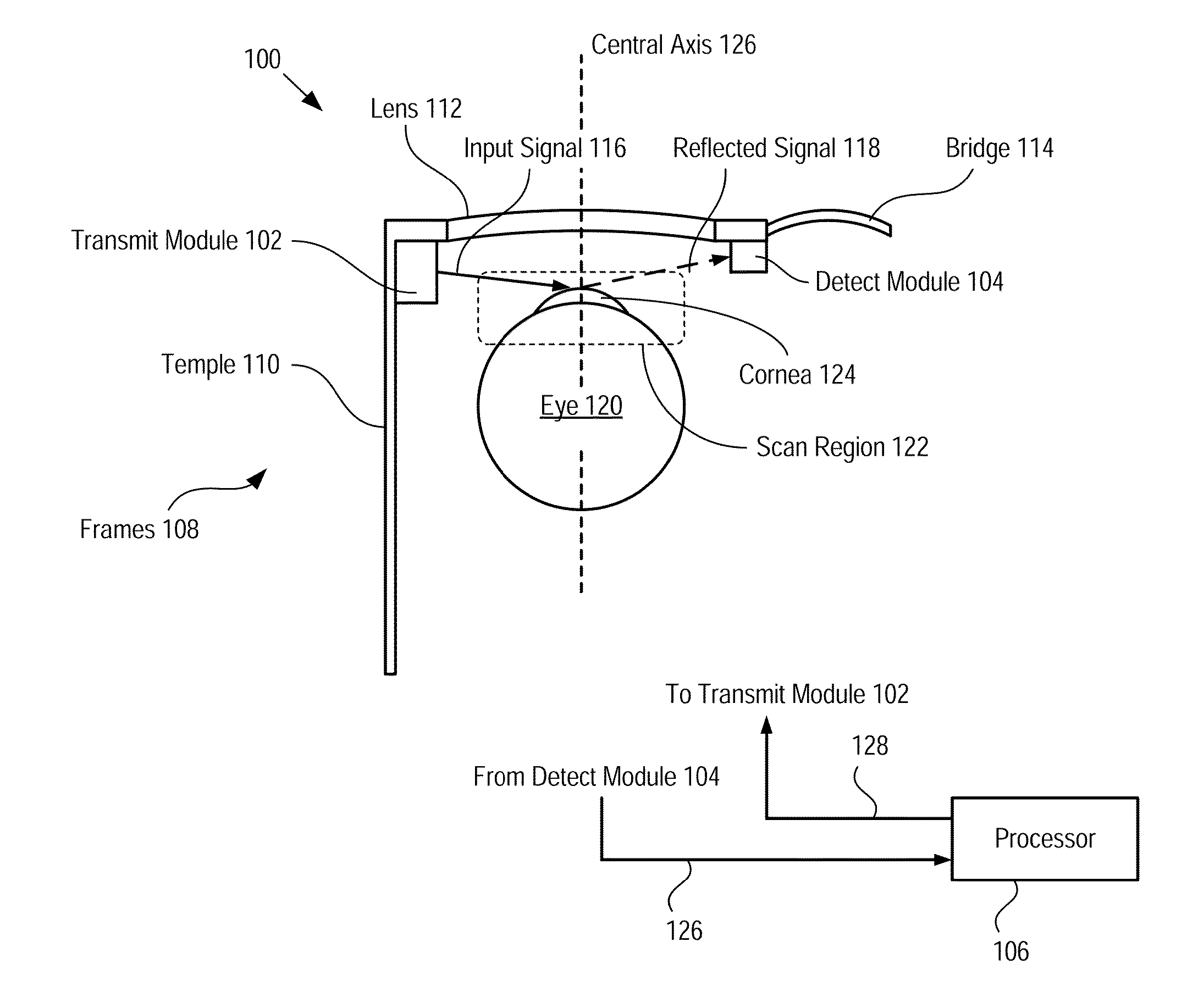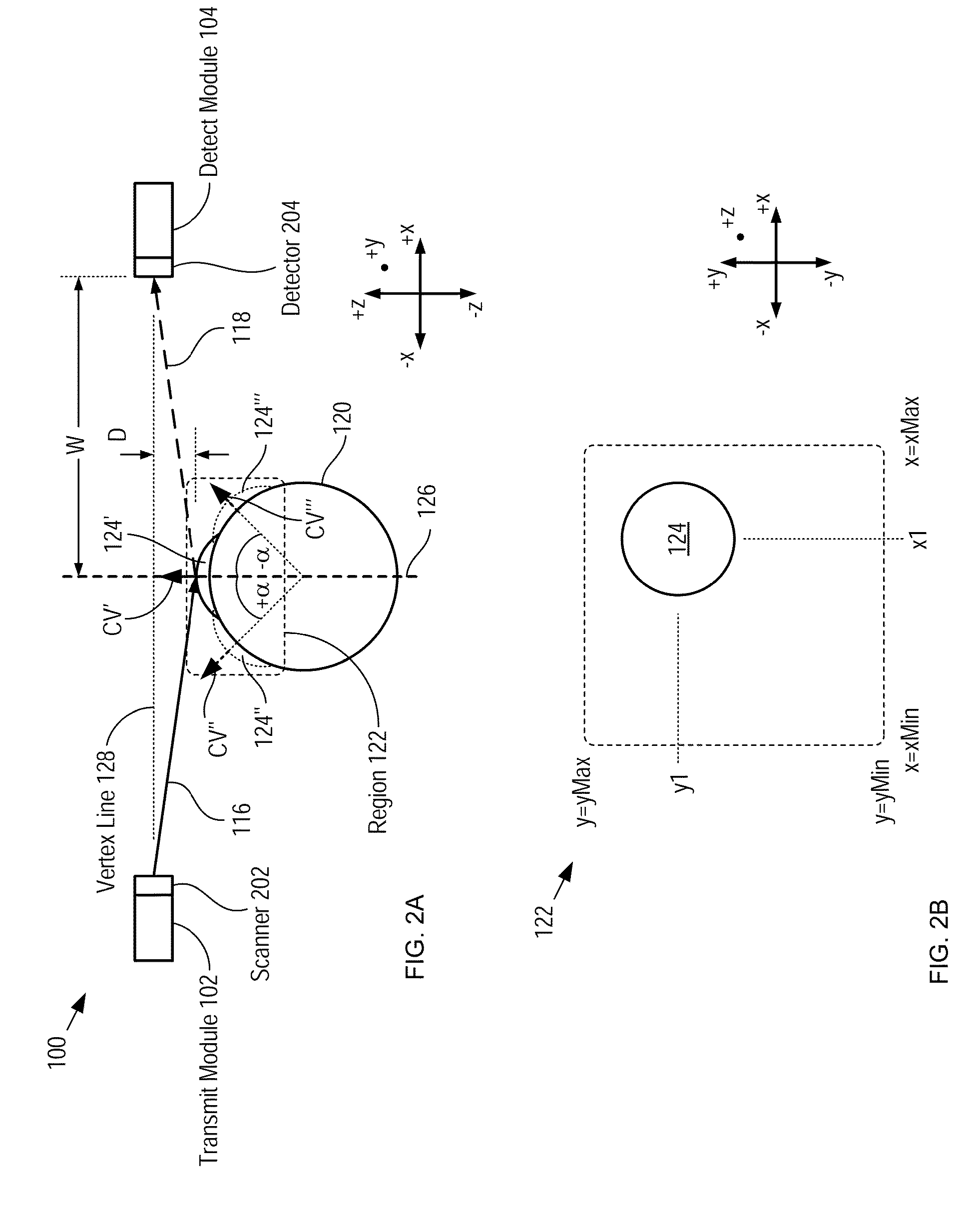Eye-Tracking System and Method Therefor
a technology of eye-tracking and eye-tracking, which is applied in the field of object-tracking systems, can solve the problems of difficult, if not impossible, use of eye-tracking devices in many applications, slowness, and/or restriction, and achieve the effect of maximizing the peak amplitude of electrical signals
- Summary
- Abstract
- Description
- Claims
- Application Information
AI Technical Summary
Benefits of technology
Problems solved by technology
Method used
Image
Examples
Embodiment Construction
[0042]FIG. 1 depicts a schematic drawing of an eye-tracking system in accordance with an illustrative embodiment of the present invention. System 100 includes transmit module 102, detect module 104, and processor 106. Transmit module 102 and detect module 104 are arranged on a rigid support in a fixed orientation relative to one eye of a test subject. System 100 enables tracking of a surface feature (e.g., cornea 124) within a two-dimensional region of an eye during typical test subject behavior (e.g., reading, viewing a computer screen, watching television, monitoring a scene, etc.), and estimating the corneal vector of the eye based on the location of the surface feature. For the purposes of this Specification, including the appended claims, the “corneal vector” of an eye is defined as the gaze direction of the eye, which is indicated by a vector extending outward perpendicularly from the center of the pupil of an eye.
[0043]Transmit module 102 is a sub-system for providing an opti...
PUM
 Login to View More
Login to View More Abstract
Description
Claims
Application Information
 Login to View More
Login to View More - R&D
- Intellectual Property
- Life Sciences
- Materials
- Tech Scout
- Unparalleled Data Quality
- Higher Quality Content
- 60% Fewer Hallucinations
Browse by: Latest US Patents, China's latest patents, Technical Efficacy Thesaurus, Application Domain, Technology Topic, Popular Technical Reports.
© 2025 PatSnap. All rights reserved.Legal|Privacy policy|Modern Slavery Act Transparency Statement|Sitemap|About US| Contact US: help@patsnap.com



